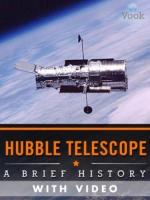|
This section contains 2,489 words (approx. 9 pages at 300 words per page) |

|
April 25, 1990
The Hubble Space Telescope (HST) is the most significant advance in astronomy since Italian astronomer Galileo Galilei (1564–1642) perfected the telescope in the seventeenth century. (An astronomer is a scientist who studies bodies in space.) Named for twentieth-century astronomer Edwin P. Hubble (1889–1953), the HST orbits Earth in outer space, taking pictures of stars, galaxies, planets, and vast regions previously unknown to humans. (A galaxy is a large group of stars and associated matter.) Since it is positioned beyond Earth's atmosphere, the space observatory receives images that are brighter and more detailed than those captured by telescopes based on land. Launched by the National Aeronautics and Space Administration (NASA) in 1990, the HST has taken spectacular pictures of the universe. In 2004, a year after the Columbia space shuttle disaster (see box in Challenger Crew entry), NASA canceled the final service mission to the HST. Supporters of...
|
This section contains 2,489 words (approx. 9 pages at 300 words per page) |

|


